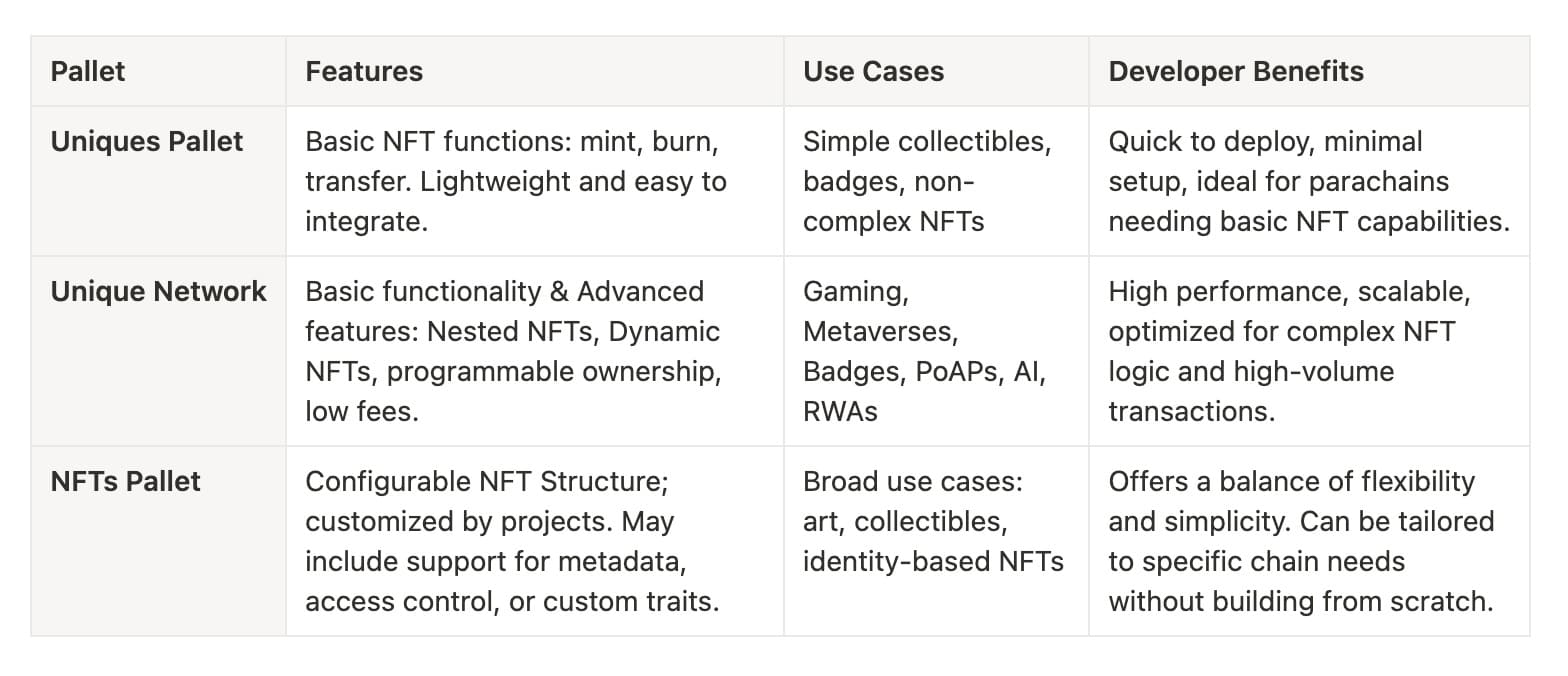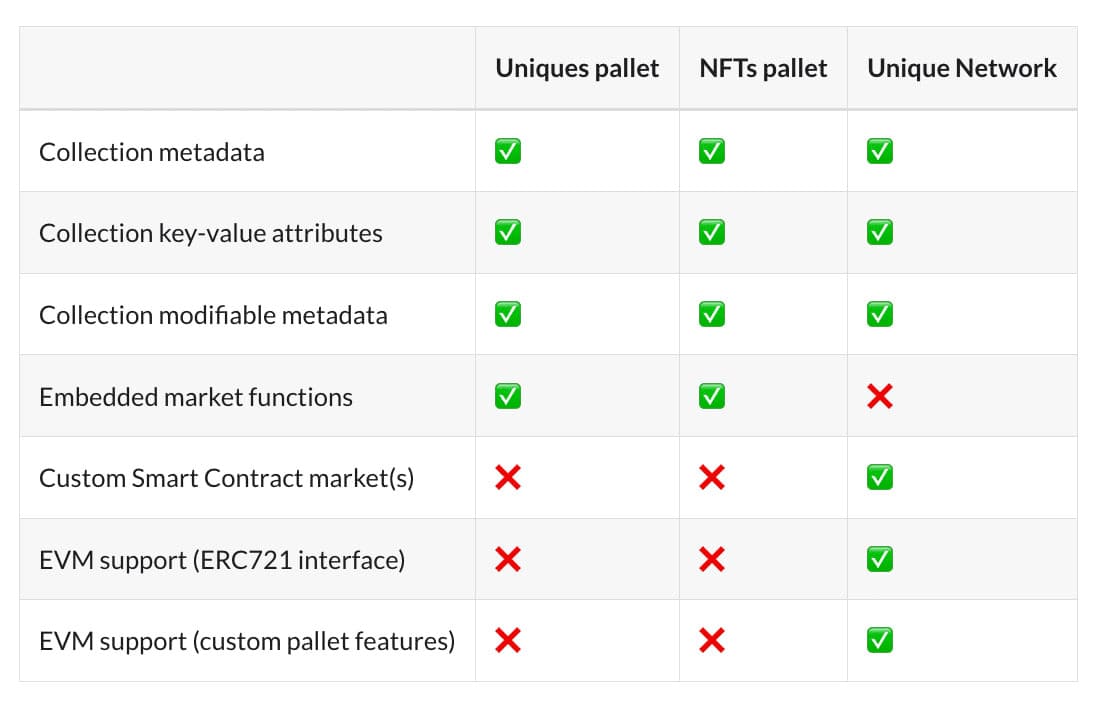Choosing the Right NFT Pallet: A Developer’s Guide to Polkadot’s NFT Stack – Part 2
The Core Building Blocks of NFT Development on Polkadot.
In the first part of ‘NFT Pallets in the Polkadot ecosystem’, we covered the ins and outs of NFT pallets, what they are, why a developer might use them, and the different kinds of NFT pallets that exist in Polkadot.
This part of the series is designed for the builders. Whether you’re a developer, product designer, or project founder who wants to understand which NFT pallet to choose and why, we’ll break down the technical capabilities, trade-offs, and ideal use cases for each pallet so you can make informed architectural decisions based on your project’s needs.
Dive into Part 2:
NFT Pallet Comparisons: Features, Use Cases, and Developer Benefits
Consider this from the point of view of a developer, or maybe you’re just exploring what’s out there, but you’re not sure where to begin.
Rest assured, we’ve got you covered. Below, you’ll find a comparison of key NFT pallets in the Polkadot ecosystem, their standout features, real-world use cases, and how each one can bring your ideas to life.
Features, Use Case specifics & Developer Benefits

NFT Pallet Comparison Functionality

As you might have noticed, there is no single “official” pallet in the Polkadot ecosystem. The list below outlines the current recommended options for the new dApps coming to use NFTs across the Polkadot ecosystem today.

While the ‘Unique’s Pallet’ is used by many existing parachains and remains stable and well-tested, the newer ‘NFTs Pallet’ is currently recommended for most use cases. It powers the majority of NFT activity across the ecosystem and benefits from broader tooling support and ongoing development.
Note: Later this year, with the introduction of PVM (Polkadot Virtual Machine) on Asset Hub, this will offer another robust and flexible option for extending NFT capabilities through custom contracts.
Additional information and docs:
- For source data used for this overview, see NFT Pallets in Polkadot.
- For a full comparison of these NFT Pallets, see here.
How to Choose the Right NFTs Pallet for Your Use Case
| Capability | What to Ask Yourself | Pallets to Consider |
| Asset Metadata |
|
|
Built‑in Marketplace |
|
|
| Smart Contract Support |
|
|
| Advanced Scenarios & Innovations |
|
|
| Throughput & Fee Model |
|
|
| Tooling Coverage |
|
|
We hope this helps you! Of course, your priorities may be different; maybe the network itself is more important than which pallet you choose, or you value documentation, support, or rock‑solid stability above all.
Our goal here is to outline the technical differences between each pallet and where they fit in the Polkadot ecosystem.
How We Can Help You!
With our support, we can help you through your NFT development journey. Our expert team is well-versed in all aspects, from tooling and use cases to marketing campaigns and project ideation.
We focus on advancing technical development (vital for NFTs on Polkadot), alongside providing marketing support, business development, and governance initiatives.
If you’re a small project, we can also assist you and make the right connections with the Fast Grants Bounty – a bounty on Polkadot dedicated to superseeding small to medium projects to get their feet off the ground.
If you want to be part of this journey, reach out to us:
Your story will be told to the masses.
Final Thoughts
NFTs Pallets are the backbone of Polkadot’s vision for interoperable, next-gen digital assets. With tools like Unique Network’s advanced pallet, developers can move beyond simple NFTs to build scalable, dynamic applications, from gaming to real-world assets.
For developers, creators, entrepreneurs, and visionaries, this is a call to build boldly; the infrastructure, technology, tools, and support are all here. Now we’re only missing you.
Missed the first part of NFT Pallets in the Polkadot ecosystem? Check it out here.
Want your story to be part of the next journal? Don’t hesitate to reach out to us, and we’ll work with you!
Join the NFTMozaic Ecosystem!
NFTMozaic is a Polkadot project created to establish Polkadot as the leading ecosystem for NFT-related applications by providing effective technology, support, business development, and marketing efforts focused on this market segment.
Follow us to get all the latest information, and join us as we shape the future of NFTs on Polkadot:
- NFTMozaic Website: nftmozaic.com
- NFTMozaic Journal: https://nftmozaic.com/journal
- Follow us on 𝕏: @NFTMozaic
- Join our community: Telegram
